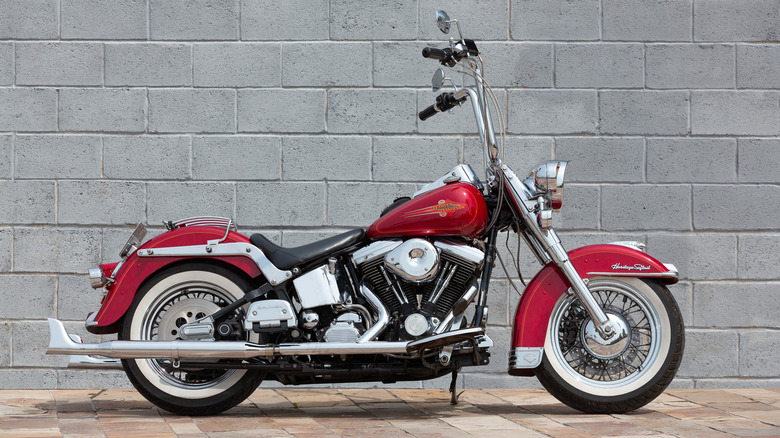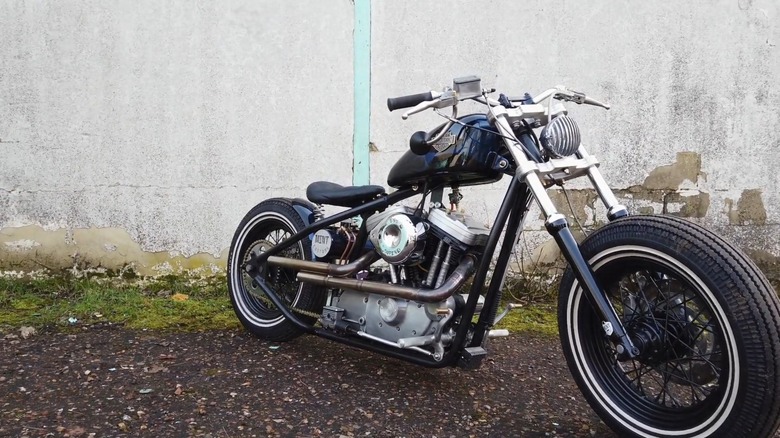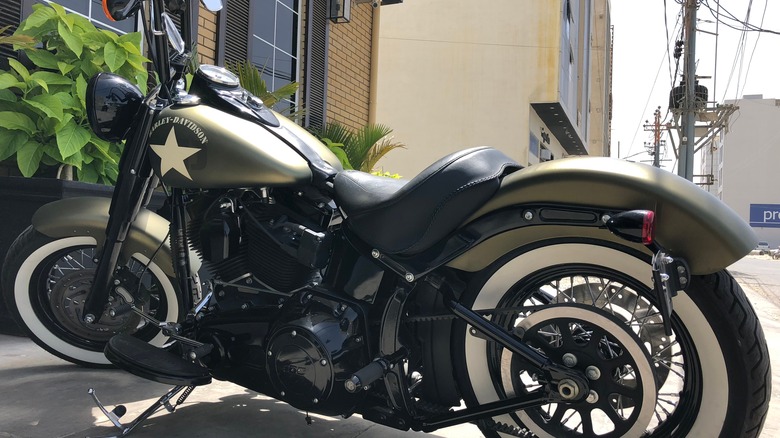Harley-Davidson Hardtail Vs. Softail: What's The Difference Between These Frame Types?
There's perhaps no bigger name in the United States motorcycle game than Harley-Davidson. The company has been around since 1903 and, in the more than 100 years since, has introduced riders to plenty of cool, powerful, and timeless motorcycles — plus, a single Harley-Davidson scooter called the Topper. Along the way, a few have stood out as Harley-Davidson's most successful motorcycles in history, scoring the company some sweet profits and positive word of mouth. One of the many good things enthusiasts have to say about the iconic manufacturer pertains to the variety found within its motorcycle offerings.
While they all maintain a certain Harley-Davidson quintessential design, not all of the company's many different models and categories resemble each other. They can feature a host of different colors, handlebar layouts, exhaust styles, and a whole lot more, affording buyers the chance to build the bike of their dreams within their budget. Among the more noticeable customization options to consider is the frame style, of which Harley has multiple. One of the most important distinctions to make is between the softail and hardtail varieties, which each come with different specs and accommodations. For those curious, these are the key differences between Harley-Davidson's hardtail and softail motorcycle frames.
The Harley-Davidson hardtail frame was the standard in the early 20th century
The hardtail Harley-Davidson frame type rose to prominence in the early 20th century. In this era, it was the standard of motorcycle frames across the entire industry. They're characterized by their long, sturdy construction, as well as their lack of a rear suspension. Overall, they were relatively cost-effective and easy to produce, hence their prevalence.
Despite their place as one of the most important innovations in motorcycle construction, hardtail frames aren't quite adored by all. There's one major drawback to the hardtail design, which is its lack of comfort. If you end up with one such motorcycle, as they're still in production in significantly smaller numbers, it might be wise to limit your time on the road and not take it for long rides.
Underneath the seat, one can find small springs strategically placed to absorb some of the impact of driving. Still, without rear suspension, you feel every bump, dip, and imperfection on the road as you drive. Due to this dated and, in some cases, rather painful design, it's no surprise that the hardtail Harley has largely gone the way of the dinosaur, with the popularity of the frame type plummeting as a new and improved one gained traction with riders.
The Harley-Davidson softail frame surpassed the hardtail in popularity in the 1980s
In the 1970s, engineer Bill Davis took a stand against the discomfort brought on by riding a hardtail for extended periods. His solution was to create a rear suspension system for his Harley-Davidson Super Glide, which he did successfully. He then brought his unique design to Harley-Davidson, where it immediately impressed the powers that be. Come 1983, the Harley-Davidson Softail was born.
As noted, the main difference between the softail and hardtail frames is that the former included a rear suspension system. Specifically, a softail bike features an A-frame rear swingarm in the back of the bike, along with shock absorbers that are attached underneath. At the same time, softails make a solid attempt at maintaining the aesthetics of a hardtail motorcycle. As a result of their more complicated nature and additional parts, however, they don't preserve the hardtail price point. Softail bikes are on the higher end of the price scale compared to their hardtail counterparts. But for that added cost, you get plenty of added comfort while riding.
With all of that said, if you have less money on hand to buy a Harley-Davidson motorcycle and don't mind shorter, less comfortable rides, a hardtail is perfect for you. On the other hand, if you prefer more luxurious long rides and have some extra cash to spare, a softail is the right way to go.


